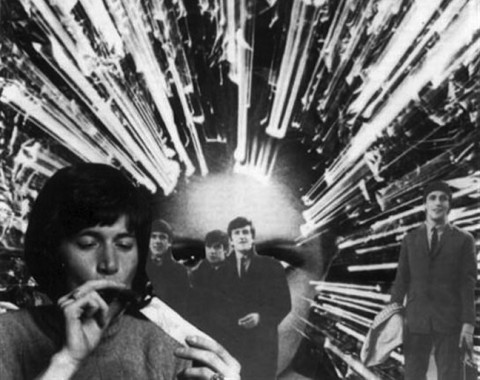
Brooklyn – http://www.microscopegallery.com/?page_id=13398
Please see the website above for additional information, as well as
and
http://blog.unl.edu/dixon/2014/04/30/screening-at-the-microscope-gallery-may-4-2014/
Microscope Gallery is extremely pleased to welcome Wheeler Winston Dixon for the first screening of his film works in over a decade. The author, professor and filmmaker, who stopped making films in 1994, last had his works screened in 2003 at a retrospective at MoMA, where the originals now reside. For the evening, Dixon presents a program of six early works made from 1969 to 1976 incorporating original footage shot in the world around him, including peace marches and Fluxus performance, commercials, and appropriated footage.
“Though he’s best known today as a scholar (his book The Exploding Eye provides a who’s who of 1960s experimentalists), Dixon’s short films are themselves visual catalogs of underground techniques: snarky Bruce Conner-ish montage, psychoactive Conrad/Sharits flicker effects, and Mekasian home-movie diaries. The distinctive Dixon kick comes from witty edits to far-out music. …” Ed Halter for The Village Voice, 2003
About this screening “Wheeler Winston Dixon” told Film International journal this month that it will be “quite probably the last public screening of my work, as they will never be available on DVD, and I will never put them on the web.”
_
Wheeler Winston Dixon is recognized as an author, professor, and underground filmmaker. His body of film work includes roughly 40 films, the originals of which are now in the collection of MoMA. He is the James Ryan Professor of Film Studies, Coordinator of the Film Studies Program, Professor of English at the University of Nebraska, Lincoln, and, with Gwendolyn Audrey Foster, editor of the book series New Perspectives on World Cinema for Anthem Press, London.
His latest books are Cinema at the Margins (2013), Streaming: Movies, Media and Instant Access (2013); Death of the Moguls: The End of Classical Hollywood (2012); 21st Century Hollywood: Movies in the Era of Transformation (2011, co-authored with Gwendolyn Audrey Foster); A History of Horror (2010), and Film Noir and the Cinema of Paranoia (2009). Dixon’s book A Short History of Film (2008, co-authored with Gwendolyn Audrey Foster) was reprinted six times through 2012. A second, revised edition was published in 2013; the book is a required text in universities throughout the world.
Program
(approximately 45 minutes)
SERIAL METAPHYSICS
Color, Sound, 15 minutes, 1972
An examination of the American commercial lifestyle, recut entirely from existing television advertisements.
“… Magical realms, pubescent fantasies, dreams of wish fulfillment, all so innocuous and tame on the television set, assume strangely mythic proportions through Wheeler’s editing and even the mundane world we accept so readily begins to look somehow dreamlike and unreal. This fusing of dream and waking consciousness creates the magic of SERIAL METAPHYSICS ” – Bruce Rubin
THE DC FIVE MEMORIAL FILM
Color, Sound, 9 minutes, 1969
With John Dowd
The film begins with a young man writhing in a frenzy in an abandoned house, then moves to rephotographed films of a Nuclear Age Bomb Shelter childhood, thence to the woods for a pastoral interlude, and in one of my favorite sections of film I’ve ever shot, a color reel re-exposed ten times in the camera, an avalanche of images from parties, gatherings, friends and others; this section ends with John Dowd ominously signaling the viewer with a trouble light, as if to suggest that the celebration is over. The final movement of the film follows five young women, back from a peace march in DC, walking through Port Authority bus terminal at midnight, oblivious to the death around them; the entire film is scored to Charles Ives’ Fourth Symphony, Fourth Movement.
QUICK CONSTANT AND SOLID INSTANT
Color, Sound, 4 minutes, 1969
With Rod Townley, The Fluxus Group, John Wallington. Soundtrack: Gerard Malanga
The film documents a Flux Mass at Voorhees Chapel at Rutgers University in 1969; intercut with footage of Rod Townley on this Harley 1200, plus the paintings of John Wallington. It also gathers together a group of my closest friends during this period in the manner of Alfredo Leonardi’s classic BOOK OF SAINTS OF ETERNAL ROME.
WEDDING
Black and White, Sound, 3 minutes, 1969
The wedding of Donna and David Hildreth (1969) with their son, Bryan. Soundtrack: Gabriel Fauré. With Michael Downey, Rich Mahr, William Malloy.
LONDON CLOUDS
Color, Sound, 3 minutes, 1970
With Edward Williams; soundtrack by Henri Pousseur
A young man’s dreams of immortality double back on themselves, as he discovers that no matter where you ultimately arrive in legend, you find yourself at the point of initial departure.
TIGHT ROPE
Color, Sound, 4 minutes, 1974
With Jon Voorhees, Berenice Klein, David Kofke Sound: The Mix Group/ Ravel
“An unusually balanced film, a very simple film (but then, one which knows itself), an evolution of feeling poised (occasionally) on a single pinpoint of light, its two ‘halves’ like two thought processes which counter each other without ever encountering Light is the subject matter, beginning in sun and ending at fireplace But this continuity is not permitted to disturb the singular emotion of the film I am especially intrigued by the stops and-starts within zoom and pan movements-these metamorphizing eye-movement more exactly than the usual smoothness thus keeping the work most carefully personal ” – Stan Brakhage
DANA CAN DEAL
Color, Sound, 4 minutes, 1976
With Saura Bartner, Kenneth Weissman, David Marotta. Soundtrack: courtesy Alan Lomax. From an idea by Jon Voorhees
Three separate events: the birth of a litter of pups at a British reform school for delinquent minors in 1946; a dentist’s convention in Cincinnati circa 1936; and common place views of New York City in the 1920s as interpreted by a visitor from Ohio.
